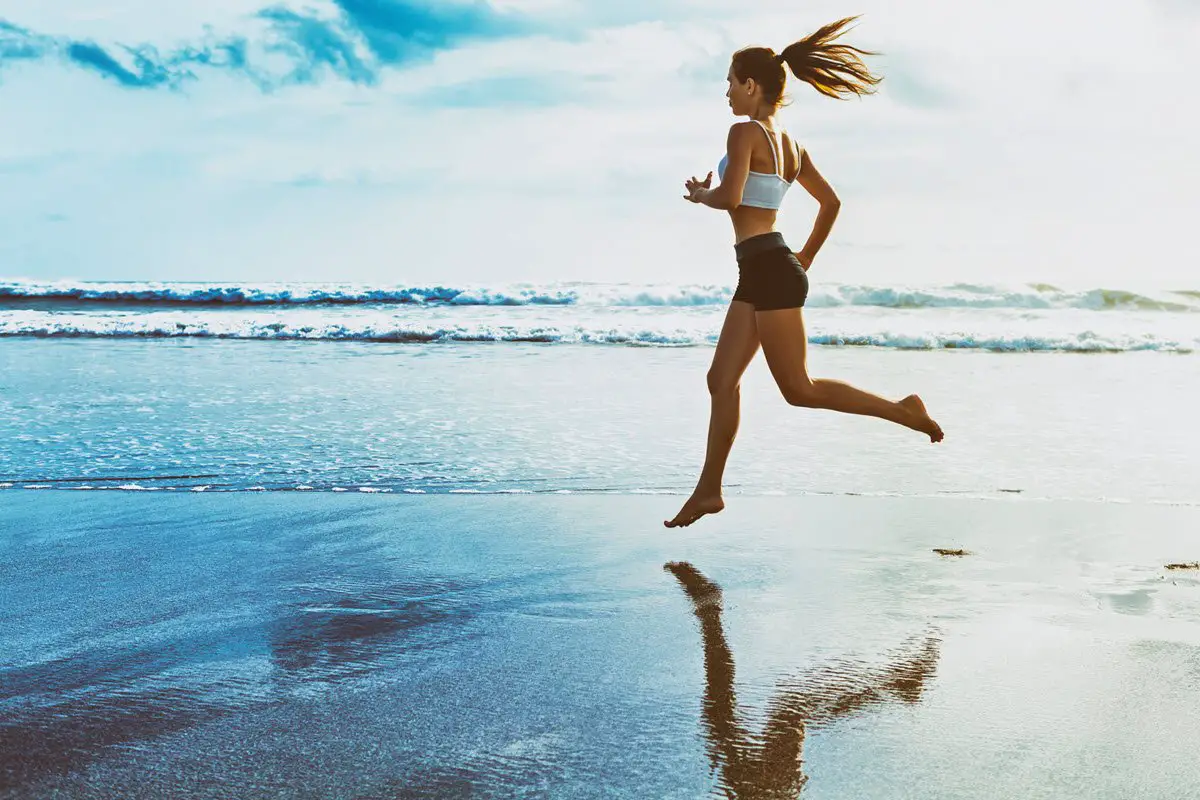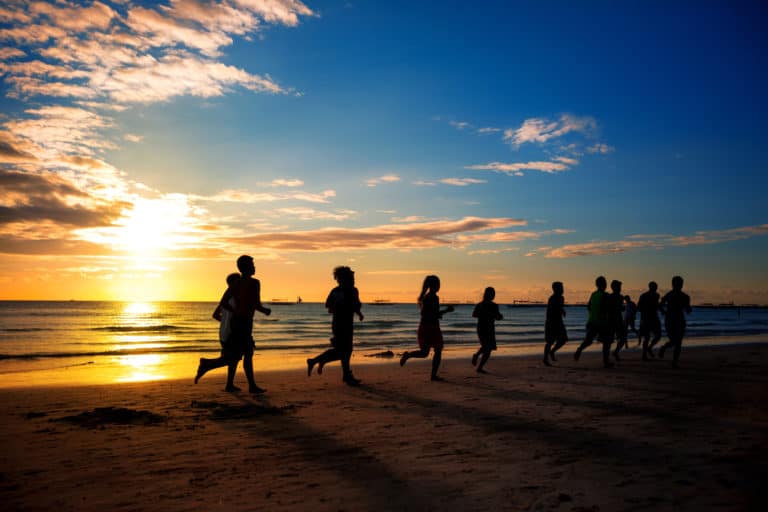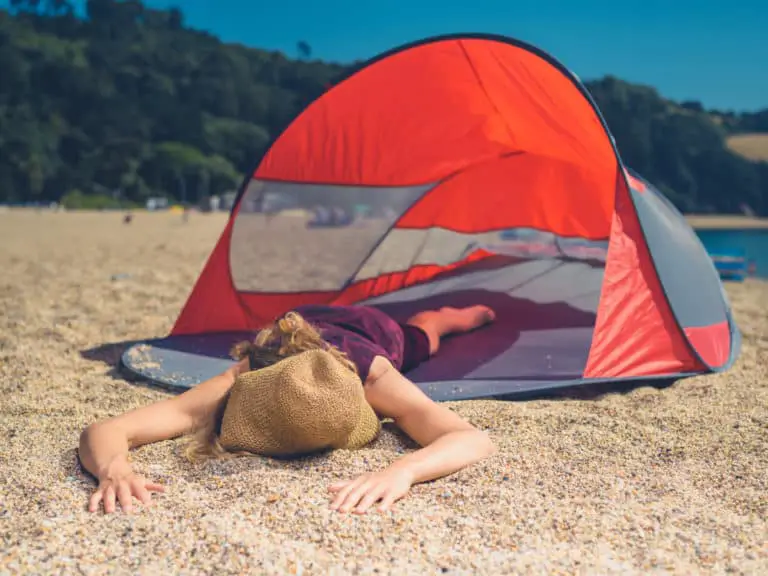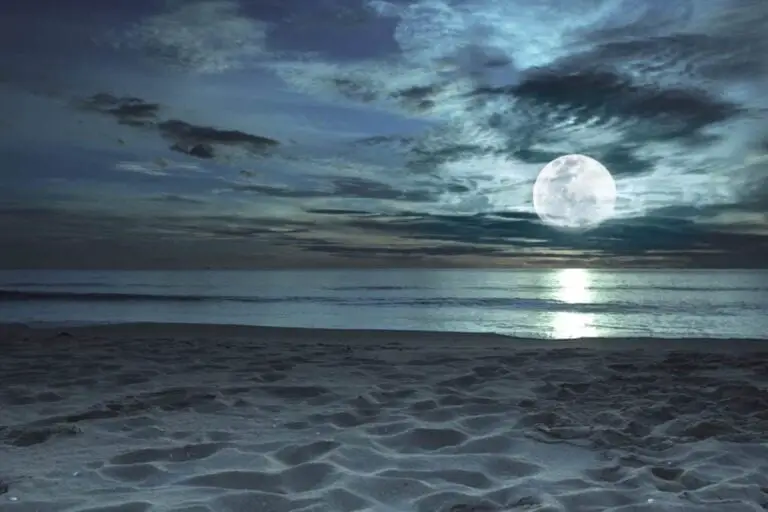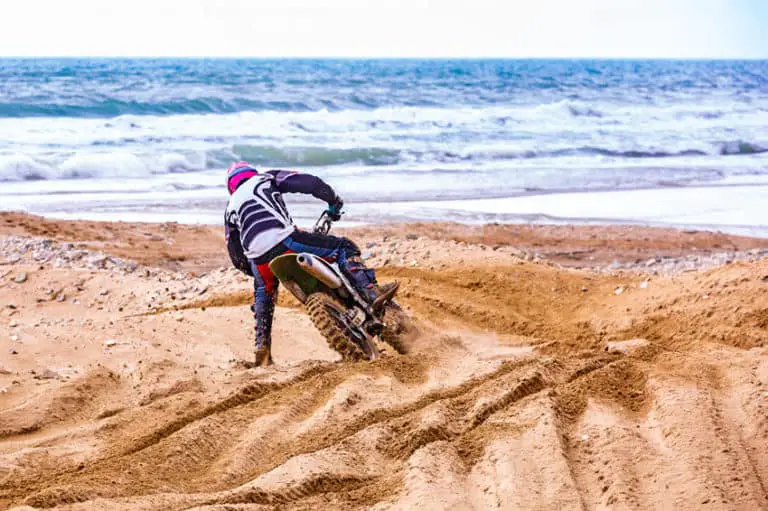Running Barefoot On The Beach Safely | Benefits, Techniques & Concerns
When I was sitting on the beach, people watching a bit, I saw some joggers pass by and noticed they were barefoot. I wondered if it was really safe to run without shoes on the loose sand. So, I did some research to check with orthopedic doctors, running coaches, and barefoot enthusiasts to find out.
Is it actually healthy beach running barefoot?
It can be if you follow these tips: Run on packed sand by the shore, and maintain a good hip alignment. land on the balls of your feet and you will be astonished by the results!
Can Running Barefoot On The Beach Be Done Safely?
Many runners have been training on hard surfaces, many with years of experience, who jump into barefoot running on the beach and try to follow the same principles. It really is not the same thing at all and could be a big injury risk.
With some training adjustments and preparations, most runners can easily make the transition and reap the benefits of this exercise.
What Are The Benefits Of Running Barefoot?
Running has many physical and mental health benefits. The time outdoors produces vital vitamin D and cardio fitness are some of these. Some of us enjoy spending much of our time on the beach. We’ll discuss how we take advantage of the health benefits while enjoying our time at the beach.
How To Prepare For Running Barefoot Safely
There are several things we can do to both enjoy running barefoot on the beach and doing it safely and without injury.
- First, begin slowly by walking a few minutes barefoot, then put your shoes back on and continue your running on a harder surface. Work into this slowly over a period of weeks to months as you become stronger in the foot and calf.
- Increase calf and Achilles’ heel stretching and warm-up exercises to help prevent cramps and muscle tears. Soft steps in short strides and slowly build up to soft, medium strides. Try to increase your range of motion as you stretch. Apply massage and heat before and after runs.
Nate from the Run Experience shares an introduction to running barefoot on the beach in this video:
You can find out more about running safely on the beach with these 8 tips.
Toe Shoes And Minimal Shoes For Barefoot Beach Running
- Running while barefoot makes your feet tired faster than running wearing shoes. This is because running with shoes provides stiff support and your feet don’t have to work as hard.
- The difference between running barefoot and with shoes is comparable to running on concrete and dry sand. Running on the sand, especially dry soft sand, will make your leg muscles work harder and get tired quicker. Your legs are not as strong in this way, so it will actually raise the risk of injury.
Find out about how many calories you burn running on the beach here.
- There are new shoe innovations such as toe shoes and minimal shoes that allow the benefits of walking or running with bare feet with semi-hard foot protection. They mimic your bare feet by providing a thin, flexible sole and do away with arch support.
- The benefit here is helping sore arches and tired feet. Harder feet really mean stronger feet.
One of the best minimal shoes on the market is Vibram’s Five Finger line. This is optimal for beach and water activities while providing maximum support.

Running Techniques That Can Help Prevent Beach Running Injuries
- Work on changes in your stride. Running on loose sand requires changes to your running form. Practice short strides, with your torso as upright as possible.
- Start a running on the beach routine by starting with packed sand. Work on landing on the balls of your feet as softly as possible. Imagine your head floating in one place as you soft-pedal across the sand. This will reduce the choppiness and stress on your hips.
- For the best results, work on hardening your feet. Running barefoot on the balls of your feet will strengthen your feet and arches and bring the curvature back to the soles. You can get your feet wet to refresh.
- You may want to invest in some minimal or sand shoes to help with this until your feet have responded. This will help to reduce flat arches, tired feet, and calf and hips soreness.
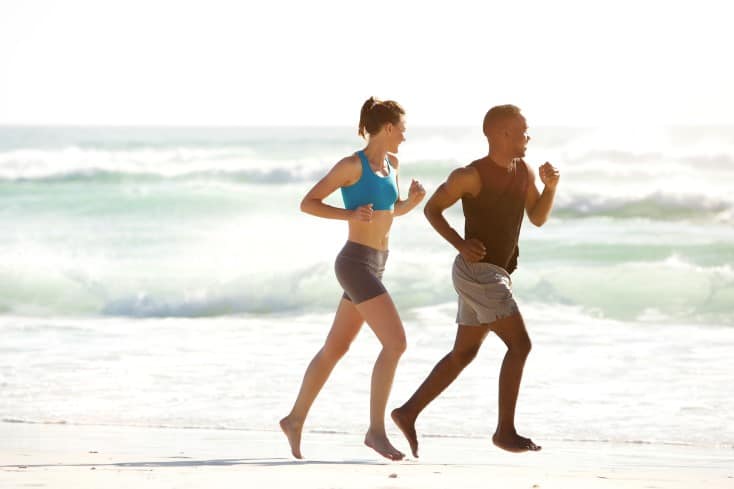
Change Where You Run Makes Running Safer (On And Off The Beach)
- One of the most helpful things you can do is to reduce the side-to-side slope as your running surface. This means harder surfaces too like the slope in the street for water drainage and the uneven surface in the beach from the high sand dunes area to the shoreline.
- On the street, run towards the center as possible. Avoiding cars, of course. Or stick to a flat running track.
- On the beach, run or walk wet packed sand that low tide creates near the water’s edge. This is when the surf is drawn back and the sand close to the water is wet and packed. This part of the beach is flatter and allows for a level hard surface and with less stress.
Heel Landing Vs Ball Landing
When deciding to run and how to run as safely and injury-free as possible, it is important to understand some of the principles involved between shoe running and barefoot running. When done properly, beach running on a hard packed surface can be beneficial.
With running shoes, we are naturally land on our feet from heel to toe in a rocking motion and a harder landing. This allows for long strides on hard surfaces. This causes the runner to have a forward posture that causes several physical issues including knee and hip injuries.
When we run barefoot, we land on the balls of our feet with a softer landing. This tends to raise your posture to a more upright position. The benefit is less back and hip strain and less stress on the plantar fascia tissue. By reducing the upward movement of the toes when running can also reduce the strain and impact on the Achilles heel.
Why Arch Injuries Are Common While Barefooted Beach Running
Although barefoot running is more of a natural motion, most new runners today have tremendously more experience running with shoes. After years of running with the heel-to-toe stride, that is what has become natural for us.
This has caused poor running habits for when we run barefooted in general. We want to land on our arches to compensate. The arches are supported by tendons, not muscle.
After miles of running in this manner, the tendons start to stretch and lose the flexibility and thickness of a normal arch. This will cause chronic pain as the arch starts to collapse to a more unsupported, flat arch.
Running shoes give firm arch support that avoids this injury with this heel-to-toe stride.
What Causes Calf Injuries While Barefoot Running?
Calf injuries occur for a different reason. When we run with shoes, our calves have support around the ankle, over the heel, and across the top of the foot. This reduces stress on the calves when landing on the heel. The foot naturally pivots from the heel and rocks forward to the toe.
Calf stabilizing muscles develop the strength to support landing in a stretched manner due to the toes pointing upward during the landing. Due to this hard landing, it stiffens and relaxes when the foot is released.
Running on the balls of your foot causes a different set of calf muscles to fire. The calves are in a flex position that lands with power, not flex. Without training, this can cause cramps and at worse, muscle tears.
Beach Running Can Cause Knee And Hip Injuries
There is also stress on the knees changing from running with shoes to barefoot. Runners are used to a long stride on the roads in an attempt to smooth out their gait.
On the beach, the tension of running in the dry sand, especially soft sand, causes this stress. When running barefoot with a long street running stride causes the body to lean forward and will naturally use the knee as a shock absorber.
The slope of the beach along from the dunes to the waterline causes a hip misalignment for both shoe-wearing and barefoot runners. The hip acting like a balance scale has one outer leg higher than the inner leg in relation to the waterline. The longer the stride, the more strain that is put on the hips.

Is Barefoot Running Good For You? Orthopedic Health Concerns
Beach running has become increasingly popular in the last 8 years. Many runners are working with orthopedic doctors to address injuries to the feet, arches, calves, knees, and hips.
Some of these injuries have occurred while running while barefoot. But most can directly be attributed to running techniques, conditioning, and overuse. Two common foot injuries are plantar fasciitis and Achilles tendonitis.
The Mayo Clinic describes plantar fasciitis as a stabbing pain in the bottom of your foot near the heel caused by activities that place lots of strain on your heel and attached tissue. Certain foot mechanics are seen as one of the major causes such as jumping and long-distance running.
Conclusion
We have discussed the health concerns of barefoot running and the proper precautions to prevent injury. You can wear minimal or toe shoes to reduce the strain of running barefoot. We introduce stretches that will reduce injury. We also provide a few tips for making running more beneficial.
Related Questions
Will walking barefoot on the beach burn the bottom of your feet? Yes, at first. Over time, your feet will harden and calluses will form and prevent future burns.
What is the best time of day to run or walk on the beach? Early morning. The beach’s soft surface is much cooler and your body tends to be more limber from a night’s rest.

